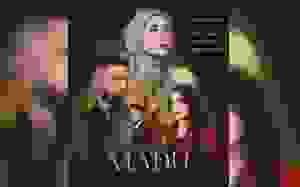Nota Belajar Bahasa Inggeris Untuk Muka Surat 1 100 Berdasarkan Buku High School English Grammar And Composition
Nota belajar Bahasa Inggeris untuk muka surat 1–10 berdasarkan buku High School English Grammar and Composition (Wren & Martin). Saya ringkaskan setiap muka surat supaya mudah faham:
📄 Page 1 – The Sentence
Sentence = kumpulan perkataan dengan makna lengkap.
Jenis-jenis ayat:
Assertive (Pernyataan) → She goes to school.
Interrogative (Soalan) → Where are you going?
Imperative (Arahan/Permintaan) → Close the door.
Exclamatory (Seruan) → What a beautiful day!
📄 Page 2 – Subject & Predicate
Subject = bahagian yang menunjukkan siapa/apa yang dibicarakan.
Predicate = apa yang diterangkan tentang subjek.
Contoh: Birds fly.
Subject = Birds
Predicate = fly
📄 Page 3 – Phrase & Clause
Phrase = kumpulan perkataan tanpa subjek + kata kerja. (contoh: in the garden).
Clause = kumpulan perkataan ada subjek + kata kerja. (contoh: She sings well).
📄 Page 4 – Parts of Speech
8 jenis kata dalam English:
Noun – nama (boy, pen)
Pronoun – ganti nama (he, she)
Adjective – sifat (big, tall)
Verb – kata kerja (eat, run)
Adverb – menerangkan verb/adjective (quickly, very)
Preposition – menunjukkan hubungan (in, on, under)
Conjunction – penghubung (and, but, because)
Interjection – kata seru (oh!, wow!)
📄 Page 5 – The Noun: Kinds of Nouns
Proper noun: nama khas (Ali, London).
Common noun: nama umum (boy, city).
Collective noun: kumpulan (team, crowd).
Abstract noun: idea/sifat (honesty, beauty).
📄 Page 6 – The Noun: Gender
Masculine: lelaki (king, uncle).
Feminine: perempuan (queen, aunt).
Common gender: boleh lelaki/perempuan (child, friend).
Neuter gender: benda mati (book, table).
📄 Page 7 – The Noun: Number
Singular: satu (boy, pen).
Plural: lebih dari satu (boys, pens).
Peraturan plural:
Tambah –s (book → books).
Tambah –es (class → classes).
Tukar huruf (man → men, child → children).
📄 Page 8 – The Noun: Case
Nominative case → noun sebagai subjek. (Ali kicks the ball.)
Objective case → noun sebagai objek. (The boy kicks the ball.)
Possessive case → menunjukkan hak milik. (Ali’s book, the boy’s toy).
📄 Page 9 – The Adjective
Adjective = menerangkan noun.
Contoh: a beautiful flower, an honest man.
Jenis:
Adjective of quality (kind, honest).
Adjective of quantity (some, much).
Numeral adjective (one, first).
Demonstrative (this, those).
Interrogative (which, what).
Possessive (my, your).
📄 Page 10 – Comparison of Adjectives
Positive degree: tall
Comparative degree: taller (Ali is taller than Abu).
Superlative degree: tallest (Ali is the tallest boy).
Beza:
one-syllable → tambah -er/-est (big → bigger → biggest).
banyak suku kata → guna more/most (beautiful → more beautiful → most beautiful).
📄 Page 11 – Adjectives used as Nouns
Kadang-kadang adjective digunakan sebagai noun.
Contoh:
The rich should help the poor. (rich = orang kaya, poor = orang miskin).
Kata sifat boleh jadi:
Nama kumpulan (the blind, the deaf).
Menunjukkan sesuatu (the beautiful = perkara yang indah).
📄 Page 12 – Position of Adjectives
Biasanya adjective datang sebelum noun: a good boy.
Boleh datang selepas verb tertentu: The boy is tall.
Nota: Sesetengah adjective mesti digunakan selepas verb (contoh: afraid, alive, alone).
📄 Page 13 – Correct Use of Some Adjectives
Beza antara adjective yang hampir sama maksud.
Contoh:
Each vs Every
Some vs Any
Little vs A little vs The little
Latihan diberikan untuk guna adjective dengan tepat.
📄 Page 14 – Articles
A / An digunakan untuk singular noun yang tidak spesifik.
a book, an apple.
The digunakan untuk sesuatu yang spesifik.
the sun, the book on the table.
Nota: Tiada article untuk benda umum: Sugar is sweet.
📄 Page 15 – Personal Pronouns
Pronoun = ganti nama.
Orang pertama: I, we, me, us.
Orang kedua: you.
Orang ketiga: he, she, it, they, him, her, them.
Pronoun mesti selaras dengan kata kerja:
He is, bukan He are.
📄 Page 16 – Reflexive & Emphatic Pronouns
Reflexive pronoun: menunjukkan tindakan kembali kepada subjek.
I hurt myself.
Emphatic pronoun: untuk penekanan.
I myself saw it.
📄 Page 17 – Demonstrative, Indefinite & Distributive Pronouns
Demonstrative: this, that, these, those.
Indefinite: some, any, none, all, few, many.
Distributive: each, either, neither.
Contoh:
Neither answer is correct.
Each boy got a prize.
📄 Page 18 – Relative Pronouns
Digunakan untuk sambung ayat.
Who – untuk manusia (subjek).
Whom – untuk manusia (objek).
Whose – menunjukkan milik.
Which – untuk benda/haiwan.
That – boleh ganti who/which.
Contoh: This is the boy who won the prize.
📄 Page 19 – Interrogative Pronouns
Digunakan untuk soalan.
Contoh: who, whom, whose, which, what.
Contoh ayat:
Who is there?
Whose book is this?
📄 Page 20 – The Verb
Verb = kata kerja / kata tindakan.
Jenis verb:
Transitive verb – ada objek (Ali kicks the ball).
Intransitive verb – tiada objek (The baby cries).
Nota: Sesetengah verb boleh jadi dua-dua bergantung pada ayat.
She sings well (intransitive).
She sings a song (transitive).
📄 Page 21 – The Verb: Person & Number
Verb mesti selaras dengan orang dan bilangan subjek.
Contoh:
He goes (bukan He go).
They go (bukan They goes).
Orang pertama (I/we), orang kedua (you), orang ketiga (he/she/it/they).
📄 Page 22 – The Verb: Transitive & Intransitive
Transitive verb: perlu objek. → Ali kicks the ball.
Intransitive verb: tidak perlukan objek. → The baby cries.
Nota: Ada verb boleh jadi dua-dua.
He runs fast (intransitive).
He runs a company (transitive).
📄 Page 23 – Active & Passive Voice
Active voice: subjek buat tindakan. → The boy kicks the ball.
Passive voice: subjek menerima tindakan. → The ball is kicked by the boy.
Gunakan passive jika tumpuan pada objek/tindakan, bukan pelaku.
📄 Page 24 – Mood
Indicative mood: menyatakan fakta/soalan. → He goes to school.
Imperative mood: arahan/perintah. → Close the door.
Subjunctive mood: harapan/andaian. → If I were a bird…
📄 Page 25 – Tenses (Pengenalan)
Tense = menunjukkan masa sesuatu berlaku.
3 bentuk utama:
Present (sekarang)
Past (lepas)
Future (akan datang)
Setiap satu ada Simple, Continuous, Perfect, Perfect Continuous.
📄 Page 26 – Simple Present Tense
Digunakan untuk:
Fakta umum (The sun rises in the east.)
Kebiasaan (He plays football every day.)
Kata kerja tambah -s/-es untuk orang ketiga singular.
He plays, She goes.
📄 Page 27 – Present Continuous Tense
Bentuk: is/are/am + verb-ing.
Digunakan untuk:
Perkara sedang berlaku (She is reading now.)
Perkara sementara (They are living in KL this month.)
📄 Page 28 – Present Perfect Tense
Bentuk: have/has + past participle.
Digunakan untuk:
Tindakan baru selesai (I have eaten.)
Pengalaman (She has visited London.)
Tindakan berterusan dari dulu hingga sekarang (They have lived here for 5 years.)
📄 Page 29 – Present Perfect Continuous Tense
Bentuk: have/has been + verb-ing.
Digunakan untuk:
Perkara bermula dulu dan masih berterusan (I have been studying for two hours.)
Tekankan durasi sesuatu aktiviti.
📄 Page 30 – Simple Past Tense
Digunakan untuk: tindakan yang sudah selesai pada masa lepas.
Contoh:
He went to school yesterday.
They played football last week.
Kata kerja biasanya bentuk lampau: go → went, play → played.
📄 Page 31 – Past Continuous Tense
Bentuk: was/were + verb-ing.
Digunakan untuk:
Perkara yang sedang berlaku pada masa lampau.
He was reading when I came.
Dua perkara berlaku serentak pada masa lalu.
While she was cooking, the children were playing.
📄 Page 32 – Past Perfect Tense
Bentuk: had + past participle.
Digunakan untuk:
Tindakan selesai sebelum tindakan lain di masa lalu.
He had left before I arrived.
Peristiwa masa lalu yang sudah selesai.
📄 Page 33 – Past Perfect Continuous Tense
Bentuk: had been + verb-ing.
Digunakan untuk:
Tindakan bermula pada masa lalu dan berterusan hingga masa lalu yang lain.
He had been working for two hours before they arrived.
📄 Page 34 – Simple Future Tense
Bentuk: shall/will + verb.
Digunakan untuk:
Perkara akan datang. → I will go tomorrow.
Janji / tekad. → I will help you.
📄 Page 35 – Future Continuous Tense
Bentuk: shall/will be + verb-ing.
Digunakan untuk:
Tindakan yang akan sedang berlaku pada masa depan tertentu.
I will be reading at 8 p.m.
📄 Page 36 – Future Perfect Tense
Bentuk: shall/will have + past participle.
Digunakan untuk:
Tindakan selesai sebelum masa tertentu di masa depan.
I will have finished the work by tomorrow.
📄 Page 37 – Future Perfect Continuous Tense
Bentuk: shall/will have been + verb-ing.
Digunakan untuk:
Tindakan yang berterusan hingga waktu tertentu pada masa depan.
By next year, I will have been teaching for 10 years.
📄 Page 38 – Sequence of Tenses (Peraturan)
Bila ayat utama dalam past tense, klausa ikutannya biasanya ikut past tense juga.
Contoh:
He said that he was ill.
She said that she had finished her work.
📄 Page 39 – Sequence of Tenses (Pengecualian)
Jika ayat menunjukkan kebenaran umum, tense tidak berubah.
Contoh:
The teacher said that the earth moves round the sun. (bukan moved).
📄 Page 40 – Direct & Indirect Speech (Pengenalan)
Direct speech: kata-kata asal → He said, “I am tired.”
Indirect speech: kata-kata dilaporkan → He said that he was tired.
Perubahan tense berlaku bila tukar dari direct → indirect.
📄 Page 41 – Rules for Indirect Speech (1)
Bila tukar direct → indirect:
Simple present → simple past.
He said, “I write a letter.” → He said that he wrote a letter.
Present continuous → past continuous.
He said, “I am writing a letter.” → He said that he was writing a letter.
📄 Page 42 – Rules for Indirect Speech (2)
Present perfect → past perfect.
Past tense → past perfect.
Future (shall/will) → should/would.
He said, “I shall go.” → He said that he would go.
📄 Page 43 – Pronouns in Indirect Speech
Ganti nama mesti ikut subjek & objek ayat.
He said, “I am happy.” → He said that he was happy.
She said to me, “You are late.” → She told me that I was late.
📄 Page 44 – Adverbs in Indirect Speech
Perubahan kata keterangan masa/tempat:
now → then
today → that day
yesterday → the previous day
tomorrow → the next day
here → there
📄 Page 45 – Questions in Indirect Speech
Soalan yes/no: guna if/whether.
He said, “Are you well?” → He asked if I was well.
Soalan wh- ikut perkataan asal.
He said, “Where do you live?” → He asked where I lived.
📄 Page 46 – Commands & Requests in Indirect Speech
Guna told/asked + to-infinitive.
He said, “Open the door.” → He told me to open the door.
He said, “Please help me.” → He requested me to help him.
📄 Page 47 – Exclamations & Wishes in Indirect Speech
Guna kata kerja seperti exclaimed, wished, prayed.
He said, “What a fine day!” → He exclaimed that it was a very fine day.
He said, “May God bless you.” → He prayed that God might bless me.
📄 Page 48 – The Verb: Principal & Auxiliary
Principal verb = kata kerja utama (eat, run, write).
Auxiliary verb = kata kerja bantu.
be, have, do → auxiliary utama.
shall, will, may, can, must → modal auxiliary.
📄 Page 49 – Uses of Auxiliary “Be, Have, Do”
Be: membentuk continuous & passive.
I am writing, He was punished.
Have: membentuk perfect tense.
I have seen, They had gone.
Do: untuk soalan & penekanan.
Do you play? I do like tea.
📄 Page 50 – Modal Auxiliaries
Modal verbs: shall, will, can, may, must, ought to, need, dare, used to.
Guna untuk tunjuk kemungkinan, keperluan, kewajipan, izin.
You must obey rules.
He can swim.
May I come in?
📄 Page 51 – Modal Verbs (Uses)
Shall: janji, tekad (I shall return.).
Will: kesanggupan, kebiasaan (He will help you.).
Should: nasihat, kewajipan (You should study.).
Would: kesanggupan dulu, kesopanan (He would sit for hours.).
📄 Page 52 – More on Modal Verbs
May: izin, kemungkinan (May I come in? / It may rain.).
Might: kemungkinan kecil (He might be late.).
Must: kewajipan kuat, kepastian (You must obey. / He must be ill.).
Ought to: kewajipan moral (We ought to help the poor.).
📄 Page 53 – Modal Verbs (Need & Dare)
Need: keperluan (You need not come.).
Dare: keberanian / cabaran (He dared not speak. / How dare you say so!).
📄 Page 54 – Passive Voice (Pengenalan)
Bentuk: be + past participle.
Contoh:
Active: He writes a letter.
Passive: A letter is written by him.
Digunakan bila tumpuan pada tindakan/objek, bukan pelaku.
📄 Page 55 – Passive Voice (Tenses)
Present: A letter is written.
Past: A letter was written.
Future: A letter will be written.
Perfect: A letter has been written.
📄 Page 56 – Passive Voice (Modal Verbs)
Bentuk: modal + be + past participle.
Contoh:
The work must be done.
The letter can be posted.
📄 Page 57 – Infinitives (Pengenalan)
Infinitive = to + verb (to go, to eat).
Digunakan sebagai:
Subjek (To err is human.).
Objek (I like to read.).
Tujuan (He went to school to study.).
📄 Page 58 – Infinitives (Bare & Split)
Bare infinitive: tanpa to (let him go, make him do).
Split infinitive: to + adverb + verb (to boldly go).
Elakkan split infinitive dalam penulisan formal.
📄 Page 59 – Participles (Pengenalan)
Present participle: verb-ing (running, eating).
Past participle: bentuk lampau (written, eaten).
Digunakan sebagai adjective.
A running boy, A broken chair.
📄 Page 60 – Gerunds
Gerund = verb + -ing yang digunakan sebagai noun.
Contoh:
Subjek: Swimming is good exercise.
Objek: He likes reading.
Selepas preposition: She is fond of dancing.
📄 Page 61 – Participle Phrases
Participle boleh bentuk frasa.
Contoh:
Hearing the noise, he woke up.
Driven by hunger, he stole bread.
Nota: Frasa ini berfungsi sebagai adjective.
📄 Page 62 – Absolute Constructions
Absolute construction: frasa bebas dengan participle.
Contoh:
The weather being fine, we went out.
God willing, we shall succeed.
Memberi latar belakang atau sebab tambahan.
📄 Page 63 – Gerund Phrases
Gerund + perkataan lain → frasa noun.
Contoh:
Playing football is fun.
He is fond of reading novels.
Nota: Selalu jadi subjek atau objek.
📄 Page 64 – Difference between Gerund & Participle
Gerund: -ing berfungsi sebagai noun. (Swimming is healthy.)
Participle: -ing berfungsi sebagai adjective. (Swimming boys are tired.)
📄 Page 65 – Uses of the Same Word
Ada perkataan boleh jadi gerund atau participle bergantung konteks.
Contoh:
I like painting. (gerund)
A painting boy. (participle)
📄 Page 66 – The Noun Clause (Pengenalan)
Noun clause = klausa yang berfungsi sebagai noun.
Contoh:
I know that he is honest.
What you said is true.
Digunakan sebagai subjek atau objek.
📄 Page 67 – Uses of Noun Clauses
Sebagai subjek → What he said is true.
Sebagai objek → I know that he is honest.
Selepas preposition → I am interested in what you do.
Selepas kata adjektif → I am glad that he passed.
📄 Page 68 – The Adjective Clause (Pengenalan)
Adjective clause = klausa yang berfungsi sebagai adjective.
Contoh:
The boy who is tall is my friend.
This is the book which I bought.
📄 Page 69 – Relative Pronouns dalam Adjective Clause
Kata ganti relatif yang biasa digunakan: who, whom, whose, which, that.
The man who came yesterday is my uncle.
The book that you gave me is useful.
📄 Page 70 – Restrictive vs Non-restrictive Clauses
Restrictive clause: penting untuk makna ayat, tiada koma.
The man who is tall is my brother.
Non-restrictive clause: hanya tambahan maklumat, guna koma.
Ali, who is tall, is my brother.
📄 Page 71 – Adverb Clauses (Pengenalan)
Adverb clause = klausa yang berfungsi seperti adverb (menerangkan verb/adjective).
Contoh:
He works hard because he wants to succeed.
I will go if you come.
📄 Page 72 – Adverb Clauses of Time
Menunjukkan masa sesuatu berlaku.
Penanda: when, while, after, before, since, as, till, until.
Contoh:
Wait here until I return.
I was reading when he came.
📄 Page 73 – Adverb Clauses of Place
Menunjukkan tempat sesuatu berlaku.
Penanda: where, wherever.
Contoh:
He went where he was invited.
Sit wherever you like.
📄 Page 74 – Adverb Clauses of Purpose
Menunjukkan tujuan.
Penanda: that, so that, in order that.
Contoh:
He ran fast so that he might catch the bus.
📄 Page 75 – Adverb Clauses of Cause or Reason
Menunjukkan sebab.
Penanda: because, since, as.
Contoh:
He failed because he was careless.
📄 Page 76 – Adverb Clauses of Result or Consequence
Menunjukkan akibat.
Penanda: so…that, such…that.
Contoh:
He spoke so loudly that all could hear him.
It was such a fine day that we went out.
📄 Page 77 – Adverb Clauses of Condition
Menunjukkan syarat.
Penanda: if, unless, whether.
Contoh:
If it rains, we shall stay at home.
You will fail unless you work hard.
📄 Page 78 – Adverb Clauses of Concession
Menunjukkan pertentangan (walaupun).
Penanda: though, although, even if.
Contoh:
Though he is poor, he is honest.
📄 Page 79 – Adverb Clauses of Comparison
Menunjukkan perbandingan.
Penanda: as…as, than.
Contoh:
He is stronger than I am.
She is as tall as her brother.
📄 Page 80 – Adverb Clauses of Manner & Degree
Manner: bagaimana sesuatu berlaku.
Penanda: as, as if, as though.
Contoh: He talks as if he knew everything.
Degree/Extent: tahap sesuatu.
Penanda: as far as, according as.
Contoh: You may stay here as far as you like.
📄 Page 81 – Adverb Clauses (Ringkasan)
Semua jenis adverb clause boleh diringkas dengan frasa participle.
Contoh:
When he saw me, he ran away. → Seeing me, he ran away.
As he was ill, he could not come. → Being ill, he could not come.
📄 Page 82 – Simple, Compound & Complex Sentences (Pengenalan)
Simple: satu klausa bebas. (He reads books.)
Compound: dua klausa bebas, dihubungkan dengan conjunction. (He came and he sat.)
Complex: satu klausa utama + satu/klausa anak. (I know that he is honest.)
📄 Page 83 – Compound Sentences
Diikat dengan coordinating conjunctions:
and, but, or, nor, for, so, yet.
Contoh:
He is poor but he is honest.
Work hard or you will fail.
📄 Page 84 – Complex Sentences
Terdiri daripada klausa utama + subordinate clause.
Subordinate clause boleh jadi:
Noun clause → I know that he is honest.
Adjective clause → This is the book that I bought.
Adverb clause → He left because it rained.
📄 Page 85 – Transformation of Sentences (Pengenalan)
Tukar ayat dari satu bentuk ke bentuk lain tanpa ubah makna.
Jenis perubahan:
Affirmative ↔ Negative
Active ↔ Passive
Direct ↔ Indirect Speech
Simple ↔ Compound ↔ Complex
📄 Page 86 – Transformation: Affirmative ↔ Negative
Affirmative ke Negative → tambah perkataan not/no/never.
Contoh:
He is always punctual. → He is never late.
She is wise. → She is not foolish.
📄 Page 87 – Transformation: Interrogative ↔ Assertive
Soalan boleh ditukar ke pernyataan.
Contoh:
Who does not know him? → Everyone knows him.
Is he not honest? → He is honest.
📄 Page 88 – Transformation: Exclamatory ↔ Assertive
Contoh:
How beautiful is the moon! → The moon is very beautiful.
What a pity! → It is a great pity.
📄 Page 89 – Transformation: Active ↔ Passive Voice
He helps me. → I am helped by him.
They will finish the work. → The work will be finished by them.
📄 Page 90 – Transformation: Direct ↔ Indirect Speech
He said, “I am tired.” → He said that he was tired.
She said, “Where are you going?” → She asked where I was going.
📄 Page 91 – Transformation: Simple ↔ Compound
Simple → Compound: gunakan and, but, so.
Being tired, he went to bed. → He was tired and he went to bed.
Compound → Simple: tukar ke participle phrase.
He worked hard and he succeeded. → Working hard, he succeeded.
📄 Page 92 – Transformation: Simple ↔ Complex
Simple → Complex: tambah klausa.
On his arrival, we started. → When he arrived, we started.
Complex → Simple: tukar klausa ke frasa.
He confessed that he was guilty. → He confessed his guilt.
📄 Page 93 – Transformation: Compound ↔ Complex
Compound → Complex: gantikan dengan subordinate clause.
He must work hard or he will fail. → He will fail if he does not work hard.
Complex → Compound: tukar klausa ke dua ayat mudah.
I found the pen that I had lost. → I had lost a pen and I found it.
📄 Page 94 – Synthesis of Sentences (Pengenalan)
Synthesis = gabungkan dua/lebih ayat jadi satu.
Contoh:
He is honest. He is poor. → He is poor but honest.
📄 Page 95 – Synthesis with Participles
Gabung ayat dengan participle.
He was tired. He went to bed. → Being tired, he went to bed.
📄 Page 96 – Synthesis with Infinitives
Gabung ayat dengan infinitive (to + verb).
He wanted to pass. He worked hard. → He worked hard to pass.
📄 Page 97 – Synthesis with Noun/Phrase
Tukar klausa ke noun atau frasa.
He failed because he was careless. → He failed due to carelessness.
📄 Page 98 – Synthesis with Conjunctions
Gabung dengan kata hubung.
He is poor. He is honest. → He is poor but he is honest.
📄 Page 99 – Synthesis with Adverbs/Prepositions
Gabung menggunakan adverb/preposition.
He failed. He was careless. → He failed through carelessness.
📄 Page 100 – Synthesis (Ringkasan)
Cara gabungan utama:
Guna participle (Being tired, he slept.)
Guna infinitive (He worked hard to succeed.)
Guna kata hubung (He is poor but honest.)
Guna frasa (He failed for want of care.)
Artikel ini hanyalah simpanan cache dari url asal penulis yang berkebarangkalian sudah terlalu lama atau sudah dibuang :
http://qirmumtaz.blogspot.com/2025/09/nota-belajar-bahasa-inggeris-untuk-muka.html
 PING BABAB : Raksasa Aggregator Malaysia
PING BABAB : Raksasa Aggregator Malaysia


























